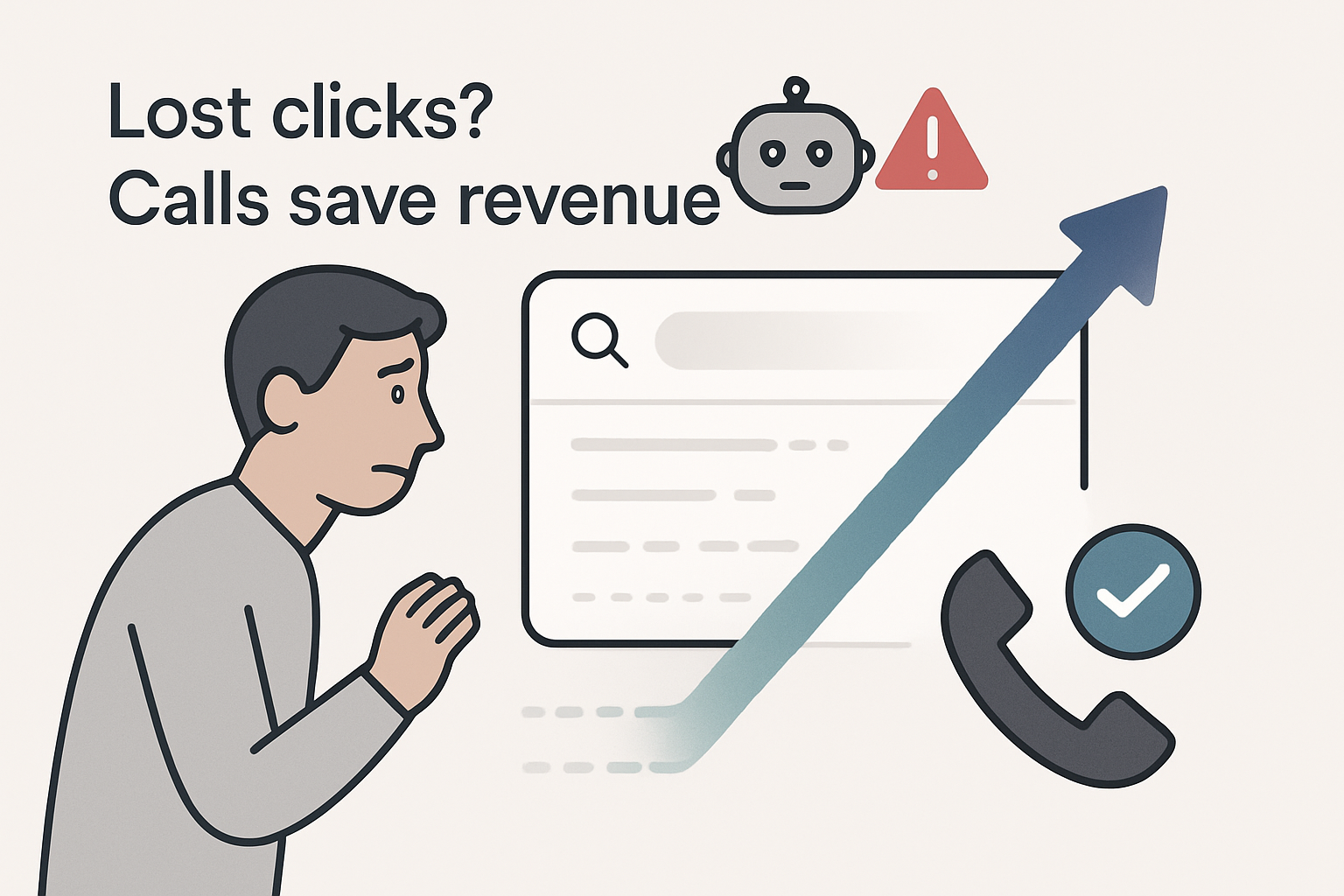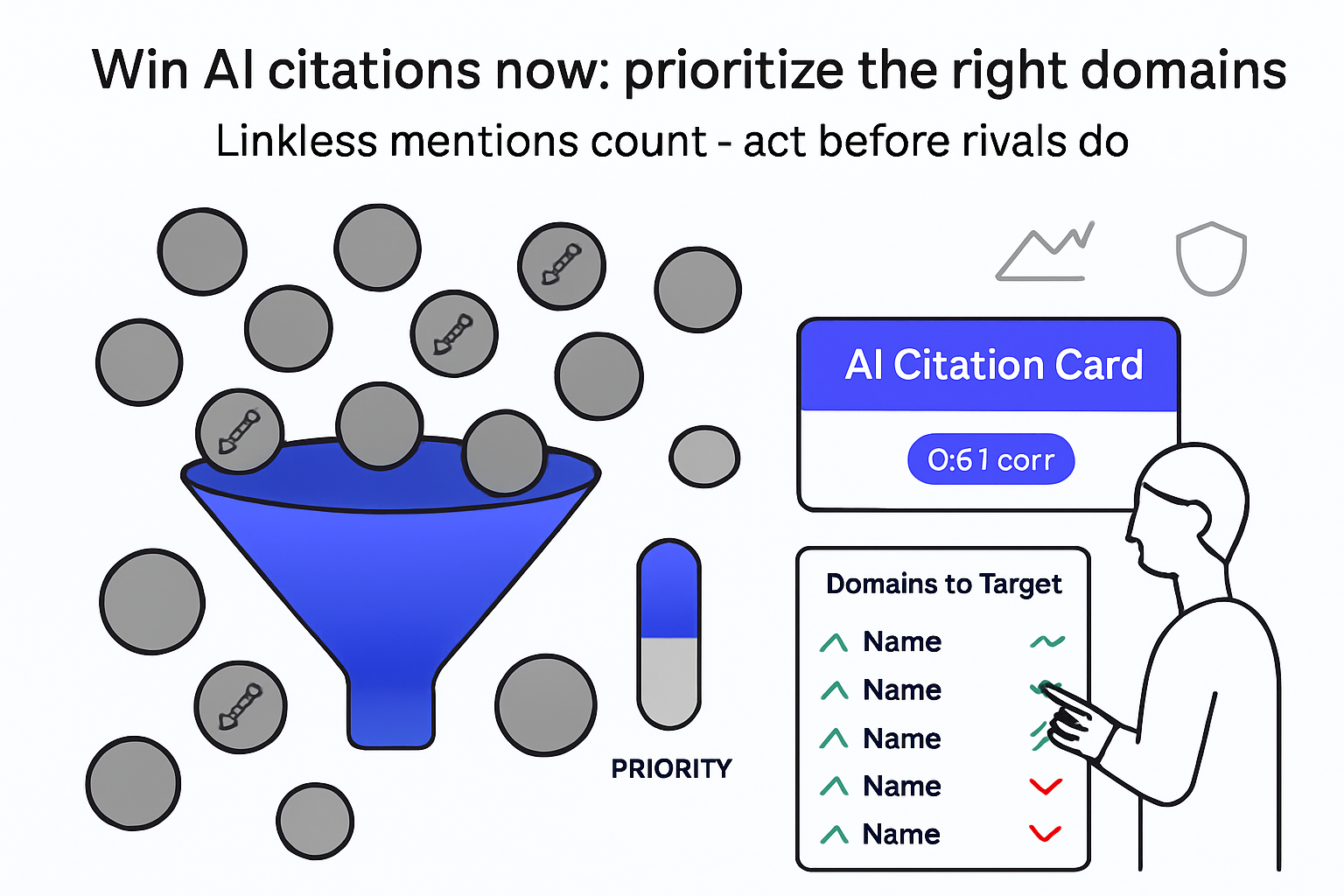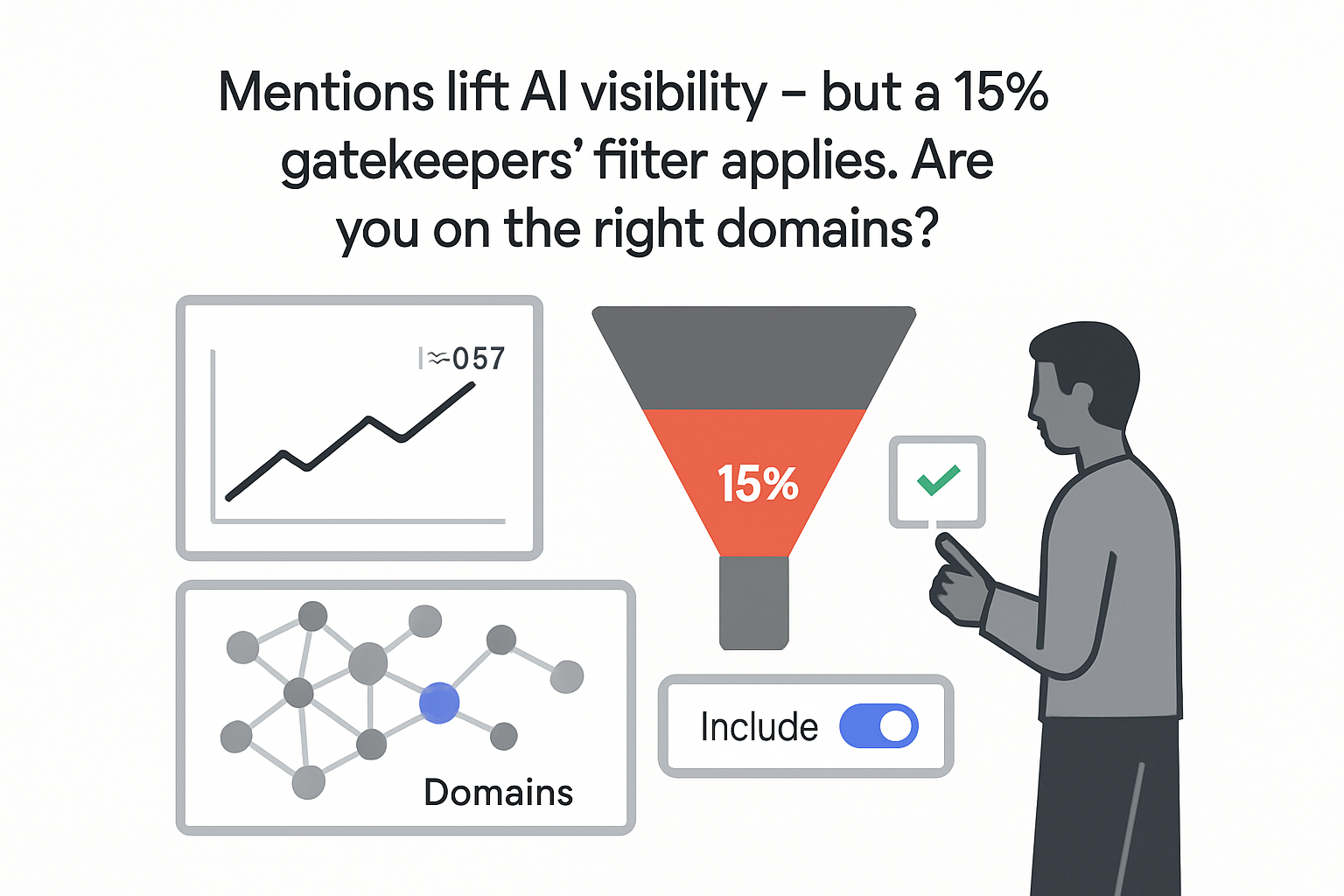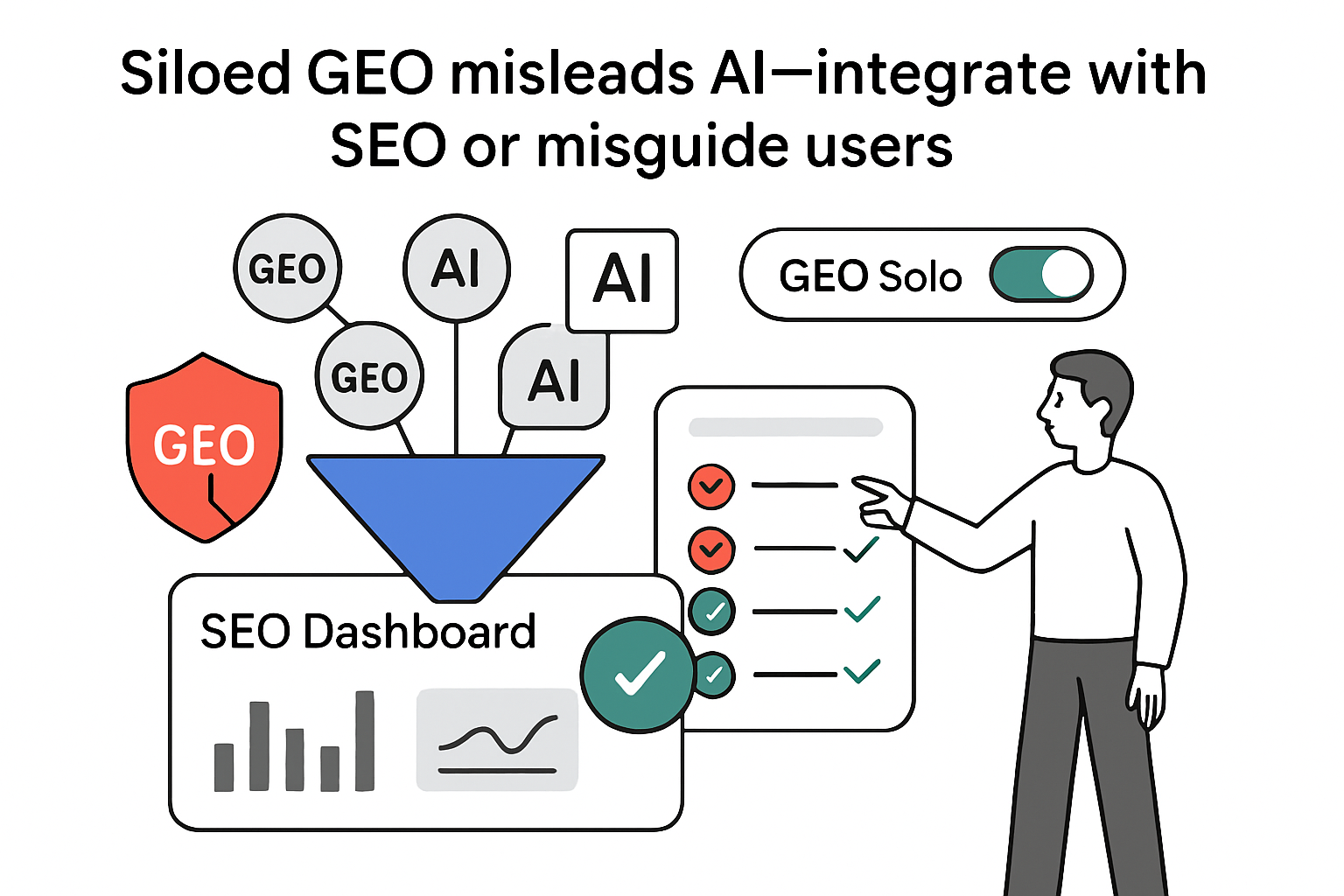Search engines increasingly answer user questions directly, while high-value conversions continue to happen offline. This 2024 round-up aggregates findings from twelve studies to quantify how these shifts affect visibility, attribution, and revenue.
Executive Snapshot
- 57% of mobile and 53% of desktop Google searches ended without a click in 2022, signaling that AI summaries and other zero-click features intercept traffic before it reaches websites [S1].
- 25% of queries in Google’s Search Generative Experience (SGE) beta trigger an AI overview; when an overview appears, organic click-through rate falls 18-30% [S3].
- 61% of consumers call a business when ready to buy, and phone leads convert 10-15x better than web forms in high-consideration verticals [S4].
- 46% of marketers cite offline conversions (calls, in-store) as their largest attribution blind spot, while 20% still rely solely on last-click models [S5, S8].
- Paid search campaigns that reuse exact customer language from call transcripts lift conversion rates 21-32% in controlled B2B experiments [S5].
Method & Source Notes
- SparkToro & Similarweb Zero-Click Search Study 2022 – 5.1 trillion US Google searches via anonymized clickstream panels [S1].
- BrightEdge Generative AI & Search Report 2023 – 250,000 commercial queries monitored during SGE public beta [S3].
- Invoca Buyer Experience Benchmark 2023 – 61.6 million anonymized calls from 200+ US brands across 12 industries, January-October 2023 [S4].
- CallRail State of Attribution 2024 – survey of 602 US marketers at companies with 25+ employees [S5].
- HubSpot State of Marketing 2024 – 1,460 global marketers surveyed, January-February 2024 [S8].
Limitations: clickstream panels under-represent privacy-blocked traffic; SGE remains in beta; call-tracking data skews toward industries that purchase call-tracking software.
AI search visibility metrics
LLM-generated summaries and other SERP features satisfy more queries within Google itself. The SparkToro/Similarweb study shows the majority zero-click pattern persists, with mobile most affected (57%). BrightEdge reports that one in four monitored queries during the SGE beta surfaces an AI overview; when it appears, classic blue-link CTR drops about 25%. Publishers such as The Verge, speaking at WAN-IFRA 2024, reported 18-20% traffic cannibalization on pages frequently cited in AI snippets (non-peer-reviewed). BrightEdge experiments also indicate that structuring answers in concise sentences, tables, or lists increases citation frequency by 39% compared with paragraph-only formats.
Offline and conversation-driven conversions
Call, SMS, and walk-in interactions continue to produce a disproportionate share of revenue in complex purchases. Across 61.6 million phone calls logged by Invoca, callers converted at 21% on average, compared with 2% for web forms in the same campaigns. Yelp’s 2023 filing states that 87% of leads for home-service advertisers arrive by phone. Yet 46% of marketers cannot connect those calls to the upstream channel mix. Among CallRail users that integrated call tracking with Google Analytics 4, attributed ROAS improved 28% over six months relative to non-integrated peers.
Voice-of-customer data beats internal assumptions
Only 38% of marketing teams systematically mine call transcripts or chat logs, according to Gartner, but those that do are 26% more likely to exceed revenue targets. In a mid-market SaaS A/B test involving 22,000 sessions, replacing headline copy with the most common phrases from support chats lifted demo bookings 29% in four weeks [S9].
Paid search alignment with buyer language
Google Ads benchmark data released February 2024 shows that Call Ads mirroring caller wording in extensions increased phone-through-rate from a median 8% to 12% across 900 accounts [S6]. SearchPilot found that synchronizing PPC and SEO messaging across 37 B2B demand-generation programs cut cost per lead by 19% compared with asynchronous messaging [S10].
Attribution model gaps
Multi-touch attribution is far from universal: HubSpot puts adoption at 43%, while 20% still rely on last-click only. Cross-device journeys exacerbate blind spots - Google/BCG reports 42% of US online buyers switch devices before converting [S11]. When a retailer added call events and cross-device IDs to its data warehouse, paid search’s share of attributed revenue fell from 48% to 31%, while organic search rose from 19% to 27% (Snowflake Summit 2023 case study) [S12].
Interpretation & Implications
- Search visibility now depends on machine readability, not just keyword density. Schema markup, concise answer blocks, and consistent brand identifiers help LLMs surface a site.
- Capturing offline and conversational data materially changes ROI calculations and often shifts spend toward low-funnel organic and branded paid search.
- Mining voice-of-customer data is a low-cost way to improve ad relevance and landing-page resonance; gains are strongest in high-consideration B2B and service categories.
- If SGE rolls out broadly in its current form, publishers reliant on informational traffic could lose 15-20% of organic sessions within 12 months; building owned channels such as email can mitigate risk.
Contradictions & Gaps
- Zero-click metrics conflict across panel providers; SEMrush Sensor shows smaller drops than SparkToro.
- Few peer-reviewed studies quantify SGE impact beyond early beta.
- Call-tracking datasets over-represent industries that value phone calls; retail and e-commerce are under-sampled.
- Privacy regulations (GDPR, CCPA) may curb cross-device stitching, limiting future attribution accuracy.
Data Appendix
- [S1] SparkToro/Similarweb Zero-Click Search Study 2022
- [S2] Statista Voice Assistant Users US 2023
- [S3] BrightEdge Generative AI & Search Report 2023
- [S4] Invoca Buyer Experience Benchmark 2023
- [S5] CallRail State of Attribution 2024
- [S6] Yelp S-1 Amendment May 2023; Google Ads Benchmarks February 2024
- [S7] Gartner Marketing Data & Analytics Survey 2023
- [S8] HubSpot State of Marketing 2024
- [S9] CXL Live 2024 Session (anonymized SaaS test)
- [S10] SearchPilot Multi-Channel Experiment Report 2023
- [S11] Google/BCG Omnichannel Customer Journey 2022
- [S12] Snowflake Summit 2023 Retailer Attribution Case







.svg)